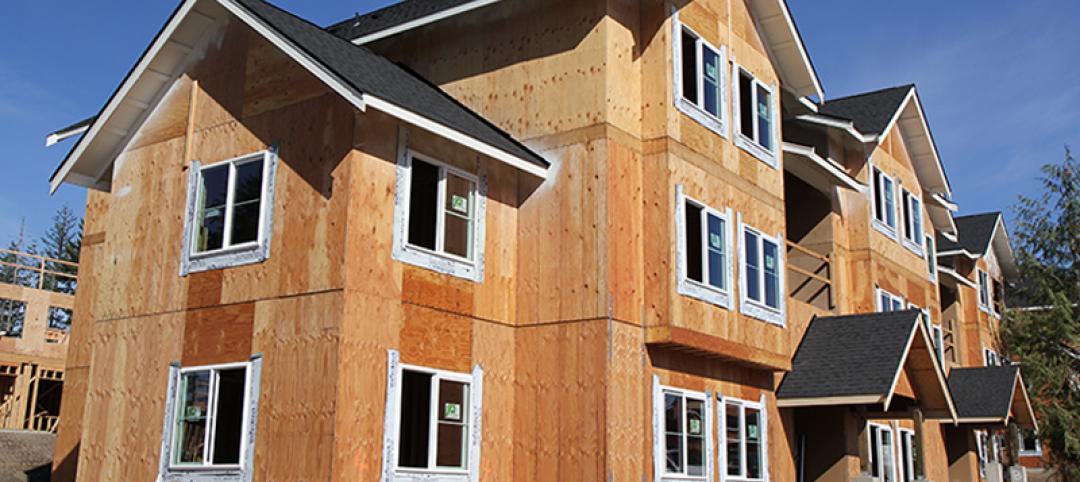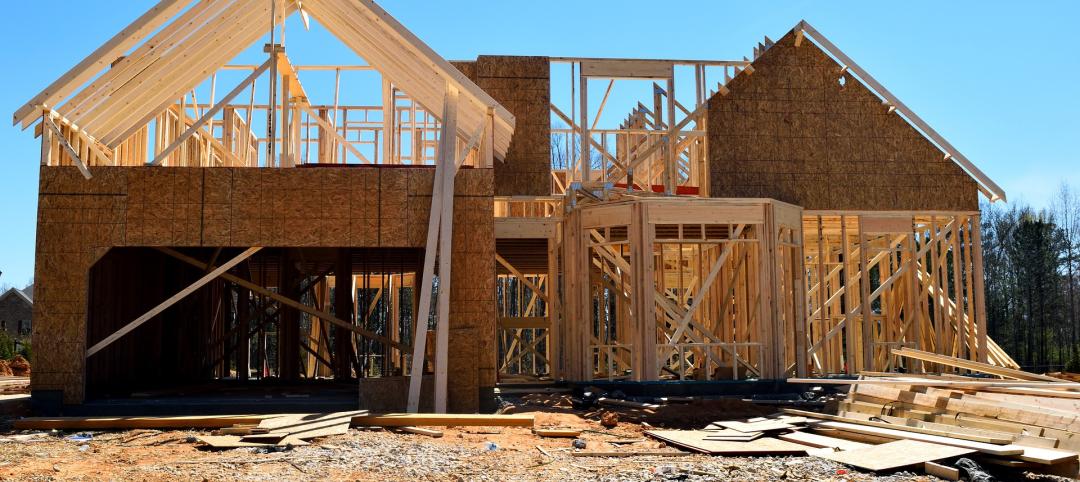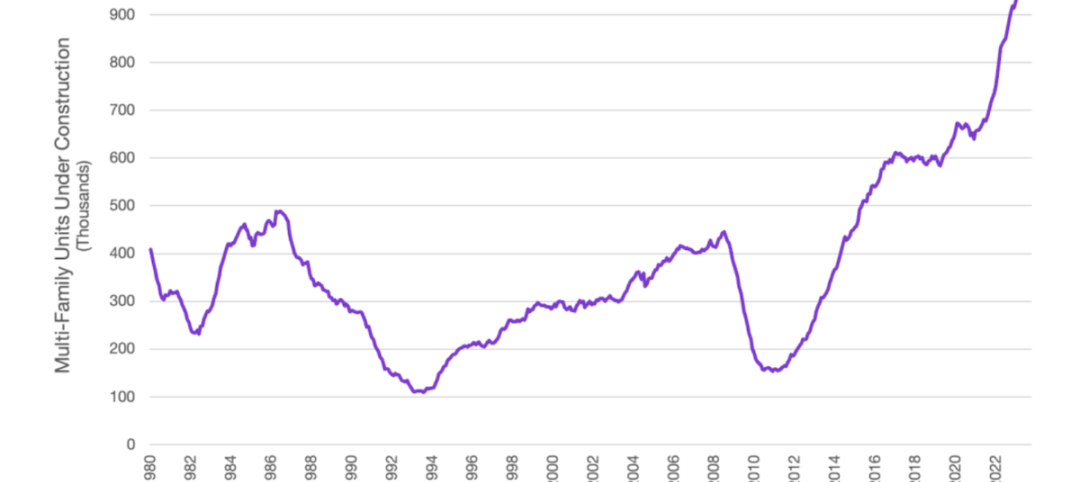Legend has it that Mark Humphreys won his first design award while still a student at Dallas’s W. T. White High School. The winning entry was a home he designed for a district-wide competition. As an architecture student at Texas Tech in the mid-1970s, he took a part-time job designing apartment buildings for a local developer in Lubbock. It didn’t take him long to figure out that he could do the same work on his own. Before you could say “Go Red Raiders,” he had a posse of other Texas Tech architecture students punching out residential designs for his own business.
After earning his architecture degree in 1978, Humphreys had stints at various firms in Lubbock before moving to Dallas in 1989. There he worked with Greg Faulkner, a University of Texas–trained architect who had experience working for a developer in Memphis. Two years later, in defiance of the horrific recession that was paralyzing the U.S. economy, they launched Humphreys & Partners Architects.
With the recession in full swing, 1991 was hardly the best time to roll out any business, no less an architecture firm. Skilled professionals were being laid off right and left; a whole generation of architects would be lost during this period. “There wasn’t much multifamily work at the time, so we started with a few single-family housing projects and built from there,” said Faulkner, HPA’s President.
Those lean years reinforced the importance of viewing each project as an opportunity to build long-term client relationships. “We don’t look at any client as a one-time client; we want to do their next 10 projects,” said Faulkner. “That’s really how we’ve grown the firm.”
See Also: The latest data in the multifamily ‘amenities war’
Market-rate apartments are HPA’s bread and butter. Its work ranges from low-rise suburban buildings to towering urban structures. About half of HPA projects also integrate mixed-use components, whether that’s a sandwich shop or a large-scale retail and entertainment component.
HPA, which reported $78.2 million in multifamily design fees in 2017, ranks as the nation’s largest multifamily design firm. CEO Humphreys estimates the firm designs 12–15% of all apartments built in the U.S. That would represent more than 50,000 units last year.
POWERED BY ENTREPRENEURSHIP
The entrepreneurial spirit is deeply embedded in HPA’s culture. This force has guided the development of a half-dozen trademarked “signature designs” that improve the performance and efficiency of multifamily projects.
Humphreys devised the first of these innovations in 1995. “Big House” is a two-story apartment structure that combines elements of a townhouse and a single-family home, including direct-access garages and private entrances. Because the structure looks more like an upscale single-family home than a typical apartment building, the concept been welcomed in many suburban residential neighborhoods. HPA has designed more than 300 Big House projects throughout the U.S.
HPA introduced the “e-Urban” concept in 2007, in response to skyrocketing construction costs. The design replaces the long hallways of mid-rise apartment buildings with short corridors and elevators, delivering an efficiency ratio of more than 80%, compared to about 60% for typical mid-rise designs. It’s also less expensive to build.
Although multifamily work accounts for about 80% of HPA’s current portfolio, the firm also has significant experience in student residential, senior housing, and hospitality projects.
HPA approaches each project with a developer’s mindset. The firm focuses on the factors that help boost net operating income, such as location, walkability, proximity to parks and marketplaces, and attractive streetscapes. “We’re not just drawing up plans; we really engage with our clients to understand all of the economic factors of a project,” said Faulkner.
To help its clients position their businesses for the future, the firm hosts periodic online webinars and conducts ongoing research to identify demographic, lifestyle, and industry trends. “Anticipating needs is one of the things our clients appreciate most about us, because it contributes to a higher return on investment,” said Humphreys.

HPA Co-founder Greg Faulkner
AN EVER-EXPANDING FOOTPRINT
Strong global demand for multifamily units has fueled a period of unprecedented growth for HPA. “Over the last eight to 10 years, multifamily rental housing has been the center of the universe, and we’ve been riding that wave,” said Faulkner.
Humphreys and Faulkner have never been shy about their growth ambitions. Geographic expansion began in 1998 with the opening of an office in Orlando, Fla. HPA established a West Coast presence in 2005 in Newport Beach, Calif. The firm has grown its U.S. footprint to include offices in Charlotte, Chicago, Denver, Houston, Los Angeles, New Orleans, New York, and Scottsdale, Ariz.
Outside the U.S., HPA has expanded into regions with pent-up multifamily demand. Montevideo, Uruguay, was the site of the first international office, in 2011. The firm now operates a global network with additional offices in Chennai (India), Hanoi and Ho Chi Minh City (Vietnam), and London.
‘We’re not just drawing up plans. We really engage with our clients to understand all the economic factors of a project.’
—Greg Faulkner, AIA, NCARB
Demographic shifts, including downsizing Baby Boomers and Millennials who are drawn to high-density areas, continue to drive market demand for rental units. Those trends have helped grow the number of full-time HPA employees to 342, a 95% increase in employment over the last five years. “We don’t turn down work. We hire people, create jobs, and grow the company,” said Humphreys.
To distinguish the firm as an employer of choice in the current tight labor market, HPA positions itself as an energetic culture that encourages creativity and innovation, but with a strong business sense. “We’re not running an art gallery; we’re running a profit center—and we’re proud to share those profits with our employees,” said Faulkner.
The founders—both of whom are AIA and NCARB members—are committed to nurturing the next generation of architects at their respective alma maters. In 2015, Humphreys donated $1.5 million to Texas Tech University College of Architecture—the college’s largest one-time gift—to establish the Mark E. Humphreys AIA Chair in Urban Design. This endowed faculty position supports ongoing research in sustainable, engaged models of urban design. Faulkner has been instrumental in establishing two academic scholarships at the University of Texas at Austin School of Architecture.
BROADENING THE FIRM’S EXPERTISE
HPA has expanded its in-house expertise by establishing several complementary business units: HPA Design Group, an interiors practice; HPLA, a landscape architecture studio; HP Urban, which specializes in planning and design for high-density projects; HP Civil Engineering; and Atticus Real Estate, the company’s real estate investment and development arm.
Two other HPA businesses fall squarely outside the domain of a traditional design firm. Glass Recycled Surfaces, a manufacturing company that Humphreys purchased in 2013, repurposes glass bottles and porcelain fixtures into countertops, flooring, and wall applications. PiaggioCharter.com offers private air transportation, leasing, and charter services from its base at Addison Airport in suburban Dallas. The business is a deeply personal passion for Humphreys, whose father was a lead designer on the original Lear Jet Model 23. Humphreys earned his pilot’s license in 2007.
At times, HPA has ventured even further from its multifamily base to flex its design chops. Vice President of Design Walter Hughes recently conceptualized two urban skyports for electric-powered vertical take-off and landing aircraft (commonly known as eVTOLs). Last May, HPA’s concept was named one of six finalists at the second annual Uber Elevate Summit. “We’re always searching out new ways to expand the connective tissue between our multifamily residences and emerging disruptive technologies,” said Humphreys.
HPA’s founders are grateful for their success. “Twenty years ago, Mark and I would’ve cut off our right arms to be doing everything we’re doing right now,” said Faulkner. “We need to knock on wood every day because we’ve been very, very fortunate.”
Related Stories
Giants 400 | Dec 20, 2023
Top 90 Student Housing Architecture Firms for 2023
Niles Bolton Associates, Solomon Cordwell Buenz, BKV Group, and Humphreys and Partners Architects top BD+C's ranking of the nation's largest student housing facility architecture and architecture/engineering (AE) firms for 2023, as reported in Building Design+Construction's 2023 Giants 400 Report.
MFPRO+ News | Dec 18, 2023
Berkeley, Calif., raises building height limits in downtown area
Facing a severe housing shortage, the City of Berkeley, Calif., increased the height limits on residential buildings to 12 stories in the area close to the University of California campus.
Sponsored | Multifamily Housing | Dec 13, 2023
Mind the Gap
Incorporating temporary expansion joints on larger construction projects can help avoid serious consequences. Here's why and how.
Giants 400 | Dec 12, 2023
Top 35 Military Facility Construction Firms for 2023
Hensel Phelps, DPR Construction, Walsh Group, and Whiting-Turner top BD+C's ranking of the nation's largest military facility general contractors and construction management (CM) firms for 2023, as reported in Building Design+Construction's 2023 Giants 400 Report.
Giants 400 | Dec 12, 2023
Top 50 Military Facility Engineering Firms for 2023
Jacobs, Burns & McDonnell, WSP, and AECOM head BD+C's ranking of the nation's largest military facility engineering and engineering/architecture (EA) firms for 2023, as reported in Building Design+Construction's 2023 Giants 400 Report.
Giants 400 | Dec 12, 2023
Top 40 Military Facility Architecture Firms for 2023
Michael Baker International, HDR, Whitman, Requardt & Associates, and Stantec top BD+C's ranking of the nation's largest military facility architecture and architecture/engineering (AE) firms for 2023, as reported in Building Design+Construction's 2023 Giants 400 Report.
Codes and Standards | Dec 11, 2023
Washington state tries new approach to phase out fossil fuels in new construction
After pausing a heat pump mandate earlier this year after a federal court overturned Berkeley, Calif.’s ban on gas appliances in new buildings, Washington state enacted a new code provision that seems poised to achieve the same goal.
MFPRO+ News | Dec 11, 2023
U.S. poorly prepared to house growing number of older adults
The U.S. is ill-prepared to provide adequate housing for the growing ranks of older people, according to a report from Harvard University’s Joint Center for Housing Studies. Over the next decade, the U.S. population older than 75 will increase by 45%, growing from 17 million to nearly 25 million, with many expected to struggle financially.
MFPRO+ News | Dec 7, 2023
7 key predictions for the 2024 multifamily rental housing market
2024 will be the strongest year for new apartment construction in decades, says Apartment List's chief economist.
Codes and Standards | Dec 7, 2023
New York City aims to spur construction of more accessory dwelling units (ADUs)
To address a serious housing shortage, New York City is trying to get more homeowners to build accessory dwelling units (ADUs). The city recently unveiled a program that offers owners of single-family homes up to nearly $400,000 to construct an apartment on their property.

















